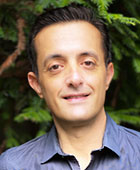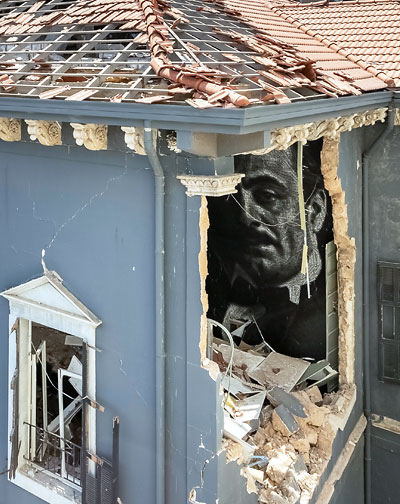From D-Day to Beirut: Bibliotherapy as Adjunct in Trauma Recovery?
Abstract
A wise author’s or philosopher’s words may augment standard interventions to help people heal from trauma.

Elias Aboujaoude, M.D., M.A
The blast in Beirut, Lebanon, on August 4, 2020, has been described as one of the largest non-nuclear explosions ever recorded. Nearly 3,000 tons of improperly stored ammonium nitrate caught fire, resulting in over 200 deaths, 6,500 injuries, 50,000 damaged homes, and untold cases of posttraumatic stress disorder (PTSD). Traumatized residents rushed to survey the devastation, documenting it in a series of images that communicated to the global community the scale of the horror and that might as well be called Beirut year zero.
One, depicting a 19th century residence torn open by the blast, stood out as witness and metaphor. Severely damaged, the house still stood, and its destroyed walls offered a peek into an interior mural of Gibran Kahlil Gibran, the author of The Prophet, looking forlorn, as though mourning the city. You couldn’t see the house and not want to try to shore up its walls. You couldn’t glimpse the mural and not want to seek solace in The Prophet.
In 1895, Gibran Kahlil Gibran (1883-1931) embarked from the now decimated Port of Beirut heading to Boston via Ellis Island. He remains widely read on his native shores, in the United States, and beyond: The Prophet is one of the best-selling books of all time and has been translated into more than 100 languages. Gibran’s transcendental, humanitarian message and his unwavering defense of the vulnerable and oppressed have long made him a favorite in times of hardship and uncertainty.

A 19th century residence torn open by a blast in Beirut in August 2020 reveals a mural of Gibran Kahlil Gibran, a Lebanese American poet, writer, and philosopher.
To help lift soldier morale in World War II, the Council on Books in Wartime created, in 1943, the Armed Services Edition library, printing millions of paperback copies of select titles, including The Prophet. Measuring about 5.5 inches by 4.5 inches, the books were meant to fit into a cargo pocket. They were distributed to troops on the battlefield, shipped to hospitals caring for injured soldiers, and airdropped on remote outposts. Not much is known about how The Prophet was received by GIs, but one can imagine weary soldiers reading it in their bunkers and drawing inspiration from words like: “You have been told that, even like a chain, you are as weak as your weakest link. This is but half the truth. You are also as strong as your strongest link. To measure you by your smallest deed is to reckon the power of the ocean by the frailty of its foam. To judge you by your failures is to cast blame upon the seasons for their inconstancy.”
Yes, trauma is real, painful, and weakening, the author seems to teach, but inner resilience is still somewhere to be accessed, and, if tapped, it can help the weakened find strength, victims recover, cities rebuild, and hope take root.
Several treatments have been proposed for the victims of trauma. Cognitive processing therapy, desensitization therapy, selective serotonin reuptake inhibitors, and the alpha-1 adrenergic blocker prazosin all have evidence to support their use. Others like memory consolidation blockers and virtual reality-based interventions hold promise. But a wise author’s or philosopher’s words may also help the healing process and “augment” standard interventions, as some preliminary research into bibliotherapy for PTSD seems to suggest. This may be as relevant in Beirut today as it was in Normandy in 1944. ■



